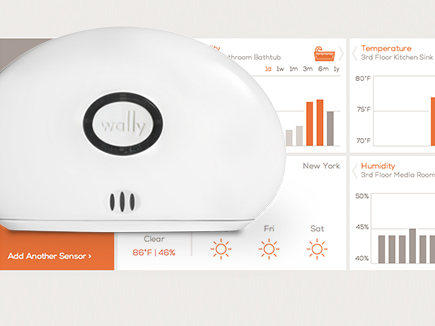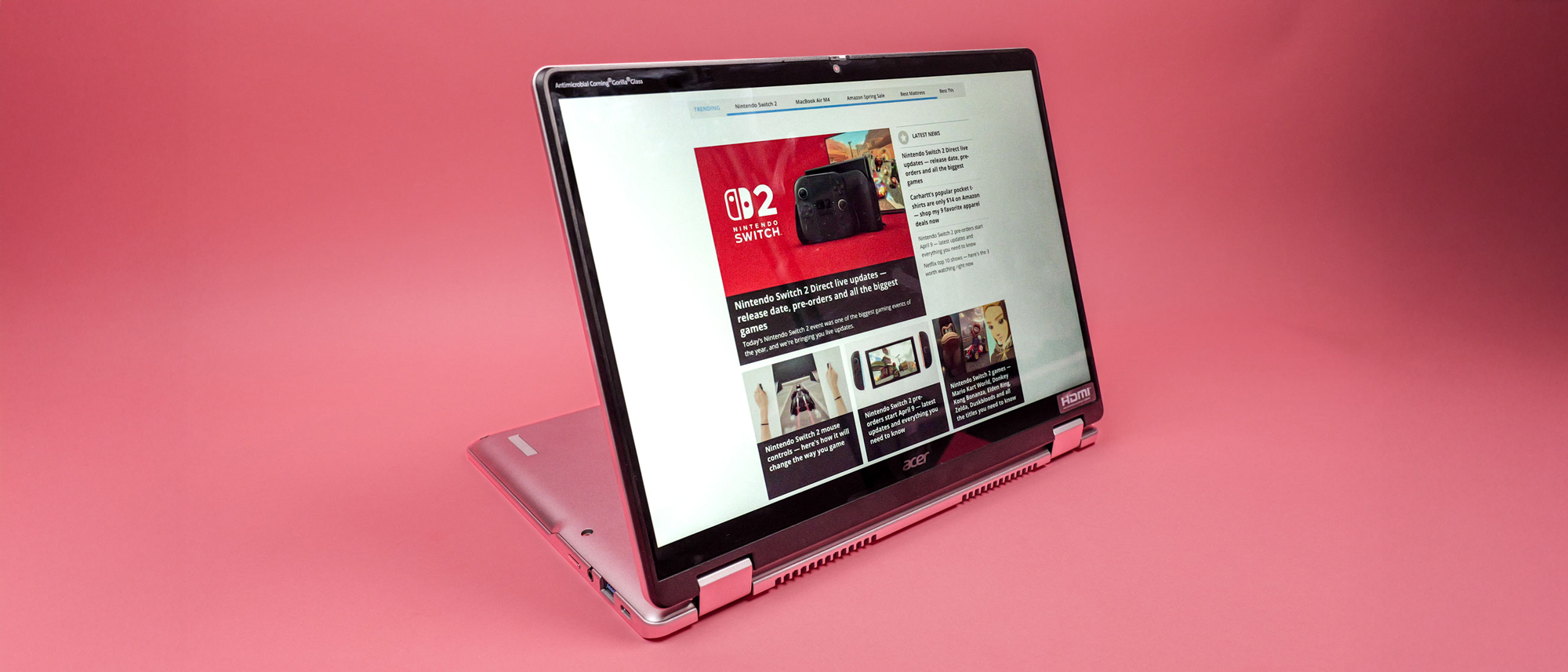Tom's Guide Verdict
Using an innovative networking technology, the WallyHome is an effective system for detecting water leaks throughout your house.
Pros
- +
Easy setup
- +
Sensitive sensors
- +
Instantly alerts you when there's a leak
Cons
- -
Doesn't link to other smart-home hubs
Why you can trust Tom's Guide
Apart from fire, there's nothing potentially more harmful to a house or apartment than a water leak. The average cost to repair water damage is between $2,000 and $3,000, according to HomeAdvisor. While it won't stop leaks, the WallyHome will help you detect them quickly. Using technology that turns your home's electrical wiring into an antenna, it lets you place wireless sensors next to any potential trouble spot. Could this $299 system help warn you about much costlier problems? You bet.
Design
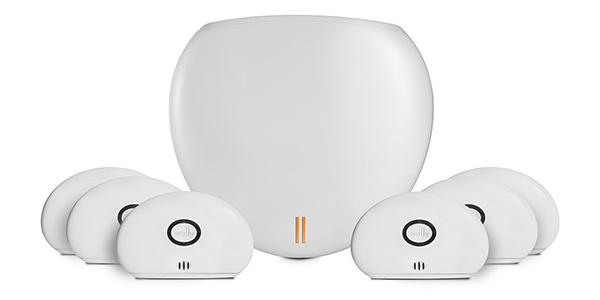
The all-white WallyHome hub is the size of a small plate or router, and is circular except for one flat section. It looks sort of like a large "D" and has a modern, clean look. That said, once you set this thing up, you're likely to bury it in a cabinet along with your router. Two lights on the top indicate power and Internet connectivity, and ports for power and Ethernet cables are located on the flat side.
The WallyHome sensors look like miniature versions of the hub. Each is a little smaller than a hockey puck and feels like a large skipping stone in your hand.
On one side is a large circular button ringed by LEDs. Two metal contacts are on the flat side, and three metal contacts on the side opposite the button. When moisture touches the metal contacts on either of two sides, it will send an alert to the hub.
MORE: 15 Amazing Smart Home Gadgets
The sensors are skinny enough so that you can cram them into tight recesses behind pipes or under appliances, such as a refrigerator.
The WallyHome kit costs $299 and comes with the hub and six sensors. The hub by itself is $125, and a six-pack of sensors is $199. Individual sensors can be purchased for $35 each.
Setup
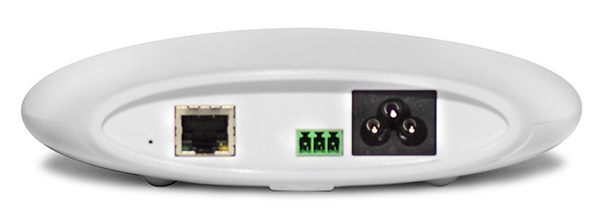
Like many DIY smart home systems, WallyHome tries to make installation as simple as possible. This starts with the packaging itself. Inside the box are two smaller boxes. The first, which contains the hub, has a big 1 on the front. The second box, which has the sensors, has a 2. Easy.
The hub has a plastic strip covering its ports telling you to create a free account at WallyHome before you do anything else. Creating an account entails entering your address, phone number and email address. You can do all this through the Android or iOS apps or a Web browser.
Next, use the included cables to connect the WallyHome hub to your router (I wish it had built-in Wi-Fi) and the nearest power outlet. While the hub starts up, the app (or website, depending on which you used to set it up) plays a short video to show where to best place sensors.
I went around my apartment with the sensors and placed them in areas most likely to be affected by leaks: one behind my toilet, another underneath the sink in my kitchen, and a third near my entertainment center. When you place a sensor, you must press its button so that it starts communicating with the hub. I found the smartphone app to be more useful than the Web app, as it was easier to hold my phone than my laptop to see if the connection between the hub and sensor had been made.
Initially, I connected the hub to a power strip and the hub failed to link up to any of the sensors. A company representative told me to connect the hub directly to an outlet. After I did, it linked to all three sensors almost instantly. In all, it took about 10 minutes to set up the hub.
How it works
The secret sauce inside the WallyHome is its proprietary SNUPI technology, which uses a home's electrical wiring to create an ad hoc wireless network. When you plug the hub into an outlet, it essentially turns every wire in your house into an antenna by emitting an RF signal through those wires.
Any sensor you place near any electrical wiring on the same circuit as the hub can then communicate wirelessly with the hub. Since there's usually a good deal of copper wiring running through your walls, this means that the sensors can be placed nearly anywhere in your home. And, because it uses very little power, the sensors don't have to be plugged in, and their internal batteries can last up to 10 years.
MORE: Best Robot Vacuums
App
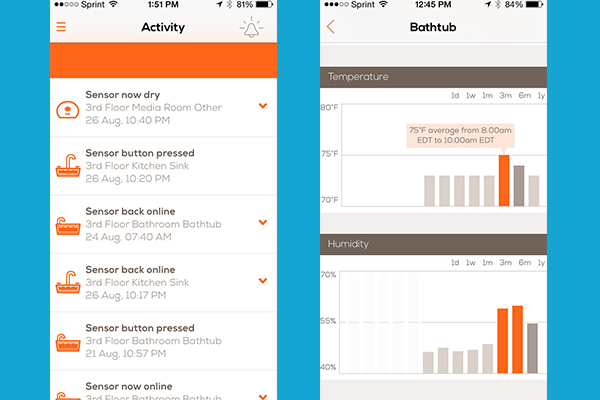
The WallyHome iOS app couldn't be easier to use. The home screen, called the dashboard, lists the sensors connected to your hub, with icons indicating each location. At the bottom is a button to add additional sensors.
If you select a particular sensor, the screen changes to show the current temperature and humidity in that spot. Scrolling down, you can set thresholds so that the hub will alert you if it gets too hot or too cold, too dry or too humid. At the very bottom of the page are bar charts showing the temperature and humidity levels over time.
Pressing the three-bar icon in the upper left corner of the dashboard opens a side menu where you can view alerts, modify your account and get support questions.
Performance
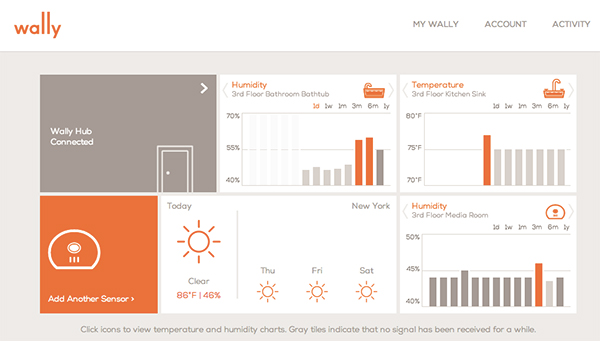
The WallyHome worked as advertised. All three sensors started delivering temperature and humidity data within a few seconds. They're surprisingly sensitive -- even pressing one to my hand was enough to set it off. The light on the front of the sensor started flashing red, and I received both a notification from the WallyHome app, as well as a text message instructing me to investigate the potential leak.
If the sensor still detects water two hours after the initial alert, it sends you a follow-up text message. Once it determines the area is dry, it will also send a message to that effect. You can set the system to send a message to several individuals, so if you’re renting a home or apartment to someone, both you and the renter can be notified at the same time.
The sensors also accurately charted the climate in the different rooms of my apartment. For example, the temperature and humidity in my bathroom spiked when I was taking a shower, but remained steady underneath my sink.
The charts on the Web interface and smartphone app are easy to read, but they only show temperature and humidity levels in two-hour increments. While that's useful to see macro trends, it would be nice to see measurements from shorter time spans.
Connectivity
While WallyHome's SNUPI technology is very interesting, I think the biggest limiting factor for the device is its lack of connectivity with other smart-home devices. Both the Lowe's Iris and Staples' Connect hubs can link wirelessly to other brands of water-leak sensors, which cost about $30 each.
So, for example, if the WallyHome could talk to those smart-home hubs, it could automatically activate a water shutoff valve if it were to detect a leak. That would be a lot more useful for a homeowner who might be on vacation and who wouldn't have a way of getting to the problem right away.
MORE: Best Bluetooth Speakers
Bottom line
Water damage is one of the most serious problems any homeowner will face, so being able to detect a leak as soon as it happens is a vital service. WallyHome's SNUPI concept -- using the wires in one's home as an antenna to link the sensors to the hub -- is a smart idea, especially for homes where a Wi-Fi signal might not reach into the recesses of one's basement, where a hot water heater might be located.
I only wish that the whole system linked to other smart-home hubs, so you could do something from afar, too. But for $299, the WallyHome is a relatively inexpensive early-warning system for homeowners who want to avoid much more costly damage from a leak they might not otherwise learn about until it was too late.
- How To Secure Your Smart Home
- Smart Home Wars: Big Opportunities, Bigger Hurdles
- Best Home Security Systems

Michael A. Prospero is the U.S. Editor-in-Chief for Tom’s Guide. He oversees all evergreen content and oversees the Homes, Smart Home, and Fitness/Wearables categories for the site. In his spare time, he also tests out the latest drones, electric scooters, and smart home gadgets, such as video doorbells. Before his tenure at Tom's Guide, he was the Reviews Editor for Laptop Magazine, a reporter at Fast Company, the Times of Trenton, and, many eons back, an intern at George magazine. He received his undergraduate degree from Boston College, where he worked on the campus newspaper The Heights, and then attended the Columbia University school of Journalism. When he’s not testing out the latest running watch, electric scooter, or skiing or training for a marathon, he’s probably using the latest sous vide machine, smoker, or pizza oven, to the delight — or chagrin — of his family.
